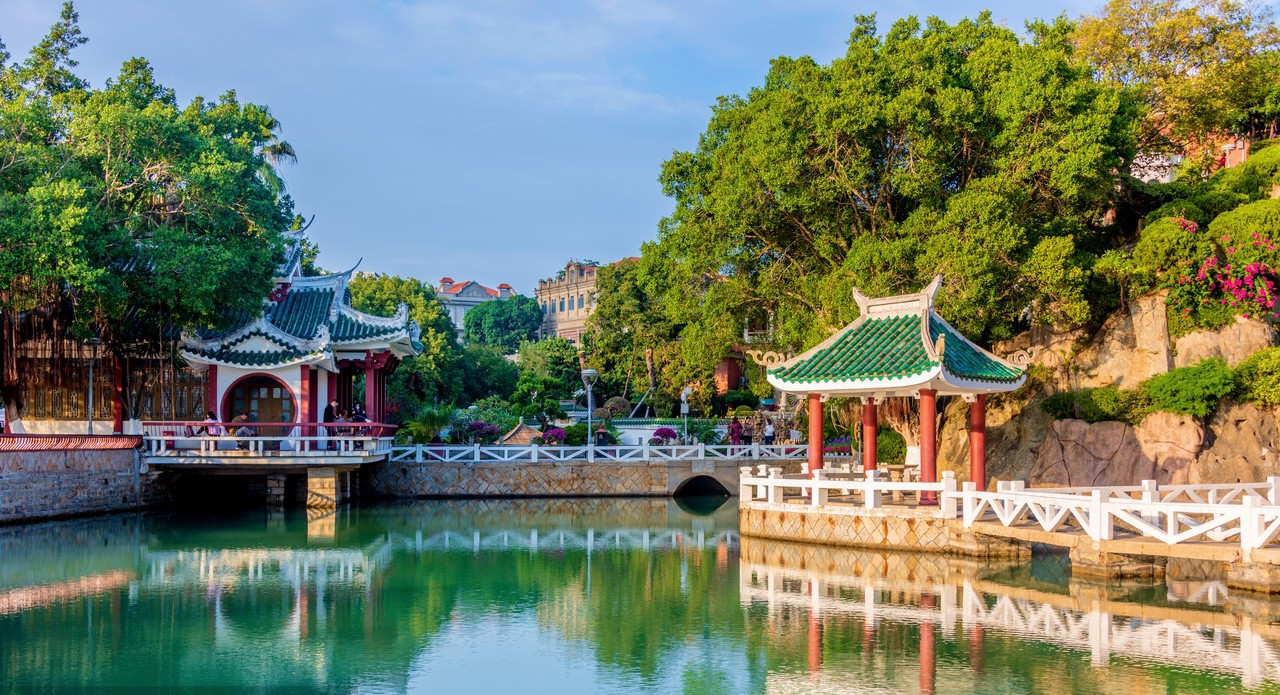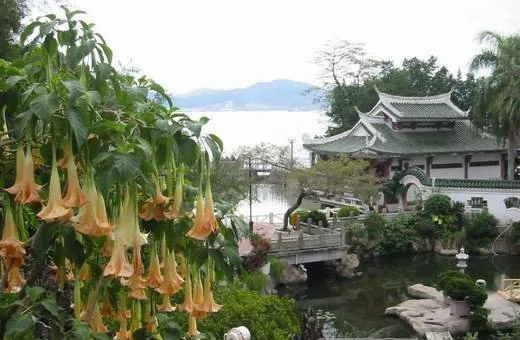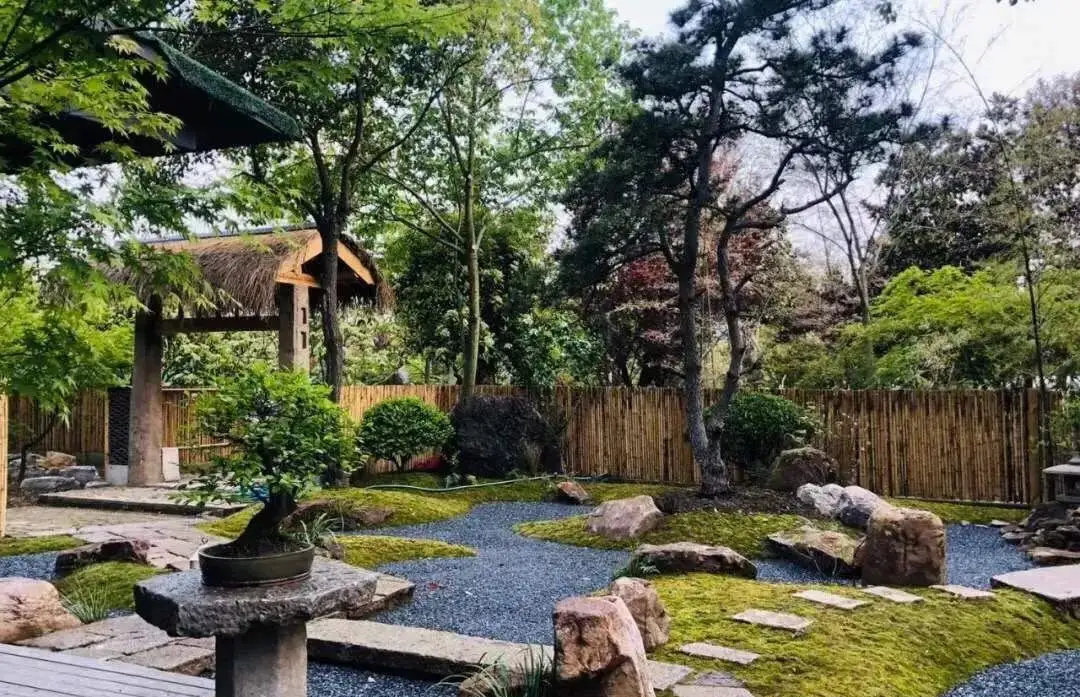Chinese Name: 菽庄花园 Pronunciation: Shūzhuāng Huāyuán
Recommended Time for Visit: 1-2 Hours
Best Travel Time: All year round
Occupied Area: 20,328 square meters
Address: No.7, Ganghou Road, Siming District, Xiamen, Fujian Province, China
| Ticket Fare | 30 yuan |
1. Children under 1.2 meters (including 1.2 meters) and children under 6 years old (including 6 years old), elderly people over 70 years old (including 70 years old), and disabled persons with valid certificates are free of charge.
2. Children under 1.4 meters (including 1.4 meters) and children under 18 years old (excluding 18 years old), elderly people over 60 years old (including 60 years old) but below 70 years old (excluding 70 years old) enjoy a half-price with valid certificates.
| Opening Hours | 8:00-18:00 |
| Ticket Office Opening Hours | 8:00-18:00 |
| Notice: Admission to Shuzhuang Garden shall not exceed 17:00. | |

Shuzhuang Garden, built in 1913, is located in the south of Gulangyu Island in Xiamen, Fujian Province. The garden was originally the private villa of the famous local gentleman Lin Erjia (also known as Lin Shuzang). In 1956, Lin Erjia's family members presented the garden to the country. Later, Shuzhuang Garden was opened to the public. It is a distinctive seaside garden that includes two main parts: Canghai Garden and Bushan Garden. The entire garden is built along the seashore, covering an area of 20,328 square meters, including 3,352 square meters of water area and 2,451 square meters for buildings.
Visitors can see the mountains and the sea in the distance -- the waves beat the shore; the beautiful flowers are full of blooms, and trees line up along the walkway.
The ancestors of Lin’s family originally lived in Longhaijiaomei, Fujian Province. To make a living, they left their hometown and moved to the Tamsui District of Taiwan during the Qianlong period of the Qing Dynasty (1636 - 1912).
Lin’s family had gradually been prosperous and wealthy in Taiwan thanks to their hardwork generation by generation. It should be mentioned that Lin Weiyuan, Lin Erjia’s father, had been appointed as the local minister. Lin’s family then built a magnificent and beautiful Banqiao Villa in Taiwan, which had left young Lin Erjia with unforgettable memories.
In 1895, during the Sino-Japanese War, the Qing government was forced to sign the humiliating “Shimonoseki Treaty” and ceded Taiwan to Japan. Lin Erjia’s father was furious about the situation and moved back with his family members to Gulangyu Island in Xiamen.
Lin Erjia was appointed as the head of the Xiamen Insurance Bureau and the premier of the Chamber of Commerce for six consecutive years after growing up. He was enthusiastic about local industries, advocated the establishment of public utilities, and funded public welfare undertakings. However, in 1905, Lin Weiyuan’s death brought Lin Erjia endless agony. Knowing he is getting older and would never return to Taiwan, Lin Erjia’s homesickness became even stronger. Finally, he decided to build a garden on Gulangyu Island in memory of his passing days in Taiwan.
In 1913, Lin Erjia hired famous and skilled craftsmen to construct Shuzhuang Garden. The garden was originally located on the side slope below the Caozai Mountain along the Jindaishui of Gulangyu Island. Lin Erjia carefully designed the layout of the garden, trying to reproduce the architectural style of his Banqiao Villa. He created such a place that enables people to see the beautiful scenery on a piece of sloping land of fewer than ten acres.

There are ten attractions which are worth viewing in the garden, licluding Meishou Hall, Renqiu Pavilion, Zhenshu Pavilion, Forty-Four Bridge, Tinglang Pavilion, Wanshishan House, Shi’er Dongtian, Yi’ai Wulu, Guanchao Pavilion, and Xiaolan Pavilion, etc., small but unique.
After the victory of the War Against the Japanese Aggression in 1945, Lin Erjia returned to Taiwan with his family members and lived there until he died in 1951. On July 1, 1956, Lin Erjia’s family members dedicated the garden to the country. Later, the local government made overall renovation and expansion — Tingtao Xuan (now the Piano Museum), Shecen Garden, a seaside corridor, and Zhiyin Plaza were built one by one, and Lin Erjia’s bronze statue was restored as well.

Canghai Garden includes the following five scenic spots: Meishou Hall, Renqiu Pavilion, Zhenshu Pavilion, Forty-Four Bridge, and Zhaoliang Pavilion; while Bushan Garden also has five scenic spots, namely Wanshishan House, Shi’er Dongtian, Yi’ai Wulu, Tingchao Pavilion, and Xiaolan Pavilion. Later, Xiaoban Bridge, Duyue Pavilion, Qianbo Pavilion, Xichun Pavilion, Mao Pavilion, and Shan Pavilion were built successively.
Wanshishan House
Wanshishan House is the place where the owner read. The literary meaning of “Wanshi” is “strong stone”. Since the owner hoped that his will would be as strong as "stone" and hoped to be smart and enlightened through studying, he named the house "Wanshishan House".

Meishou Hall (Tanying Xuan)
"Meishou Hall" is located on the right side of the entrance courtyard. The name “Meishou” means longevity. "Meishou Hall" is also known as "Tanying Xuan", because Taiwan was called Yingzhou in ancient times, and the owner named it “Tanying Xuan” to express his missing for Taiwan.
Forty-four Bridge
The Forty-four Bridge is the main scene of the whole garden that the bridge body is winding just like a swimming dragon. The Forty-four Bridge was named because the bridge was built when the owner was forty-four years old. There are gates under this bridge that lead seawater into the garden, therefore the sea, the outer pond, and the inner pond are connected altogether.

The literary meaning of Yi’ai Wulu is that “I love my house”. Yi’ai Wulu is such a yard where Lin’s family lived. In the past, Lin’s family planted bamboos and chrysanthemums around the yard. The owner was quite satisfied with the simple life there and admiring the beautiful scenery he had created, hence he named the house "Yi’ai Wulu". Visitors can see the yard today is surrounded by various kinds of beautiful chrysanthemums.
The garden is known as “Shuzhuang Garden” or “Daoshu Garden”. The reason why the garden was named “Shuzhuang Garden” is that the owner’s name is “Shu Zang” which is the homophony of “Shuzhuang”. Besides, the wealth and prosperity of Lin’s family were due to the arduous farming work by their ancestors, therefore, naming the garden as “Daoshu Garden” is also a way in memory of ancestors.
Enter from the Front Gate → Piano Museum → Meishou Hall → Forty-four Bridge → Renqiu Pavilion → Wanshishan House → Exit from the Front Gate.
To prevent drowning, children are not allowed to play near the sea without accompanying.
To avoid sunburn, visitors are suggested to bring sunscreen with them.
Since Shuzhuang Garden is located in Gulangyu Island, visitors need to take a boat at Xiamen Ferry Terminal and get off at Gulangyu Island Scenic Spot, and it takes about 10 minutes (8 yuan for a round trip).
